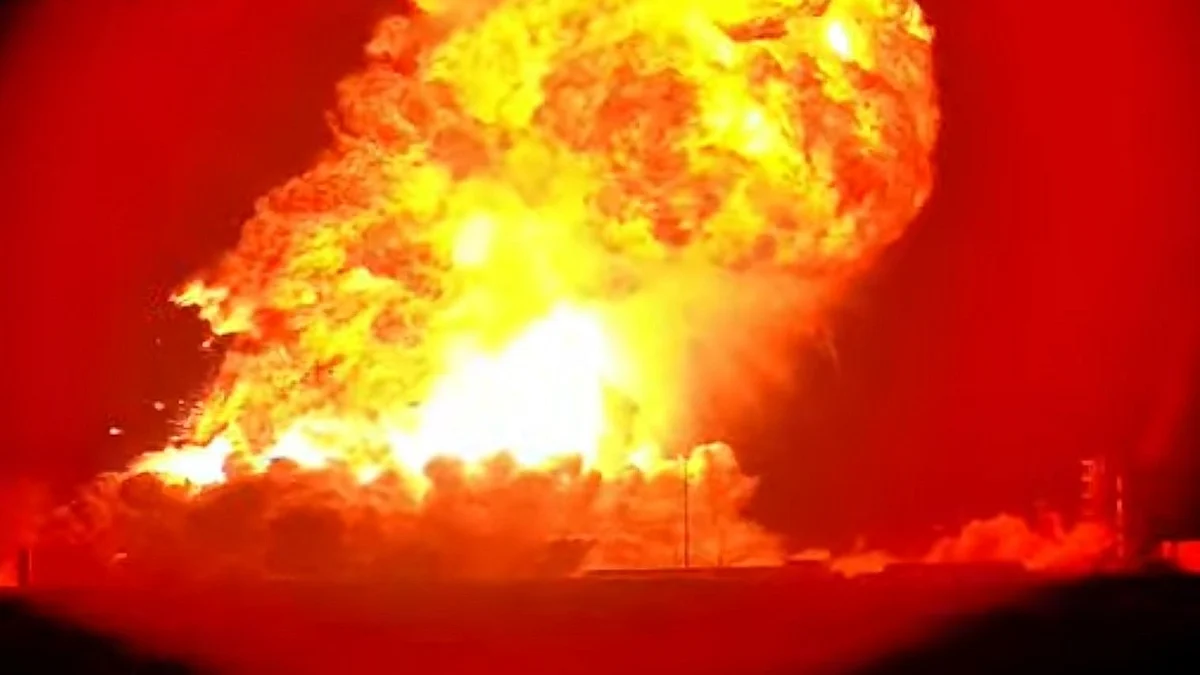Explosion at SpaceX test site derails progress towards orbital launches
The loss of Ship 36 marks the fourth major failure involving the Starship programme in 2025 alone

SpaceX’s flagship next-generation launch vehicle Starship suffered a major blow late on Wednesday night, 18 June, when its latest prototype, designated 'Ship 36', exploded during a ground test at the company’s Starbase facility in South Texas.
The incident is the latest in a series of technical setbacks for a programme central to the future of American and commercial space exploration.
The explosion occurred shortly after 11 p.m. local time (04.00 UTC) as the 15-storey upper stage was being prepared for a static fire test. Video footage from NASASpaceflight.com and LabPadre captured the moment the methane- and liquid oxygen-fuelled rocket ignited prematurely, setting off a powerful blast felt up to 30 miles away.
Fires erupted across SpaceX’s Massey’s test site — a critical facility located near the Mexican border and the only site presently used for Starship preflight validation.
The prototype was intended for SpaceX’s 10th full-scale Starship flight, tentatively scheduled for 29 June, according to a Federal Aviation Administration advisory earlier in the day. That schedule is now effectively void, with no immediate timeline for a replacement vehicle or test site recovery.
The loss of Ship 36 marks the fourth major failure involving the Starship programme in 2025.
All three previous test flights this year — conducted in January, March and May — ended in mission failure, variously from engine shutdowns, vehicle tumbling or inability to complete re-entry manoeuvres.
This comes after a comparatively successful 2024, when SpaceX managed multiple improvements, including the first mid-air catch of the massive SuperHeavy booster.
Since April 2023, SpaceX has launched nine full-scale Starship missions. However, 2025 has seen a marked regression in performance.
Notably, the January and March test vehicles both suffered from catastrophic mid-flight anomalies linked to either resonant vibrations or engine hardware failures. The May flight fared slightly better, with a nominal ascent, but failed re-entry due to a fuel leak.
Ship 36 was the third prototype of the upgraded Starship v. 2 or Block 2, a taller and heavier iteration with improved heat shielding, redesigned engine plumbing and updated avionics.
Despite these enhancements, the vehicle failed on the test stand, eliminating the only flight-ready Starship and damaging the sole test facility for prelaunch static fires. The extent of damage to Massey’s infrastructure remains unclear, but the site will likely be inoperable for an extended period.
Meanwhile, SpaceX has begun development of Starship ver. 3, a more powerful variant designed to lift up to 200 metric tonnes into low-Earth orbit and support in-space refuelling. The company says Version 3 could be ready for flight by the end of 2025, though Wednesday’s setback may delay that timeline further.
Starship is key to NASA’s Artemis III lunar landing mission, scheduled for 2027, and is expected to act as the human landing system ferrying astronauts from lunar orbit to the Moon’s surface. NASA has committed over $4 billion in contracts to SpaceX for this purpose.
The Trump administration’s proposed 2026 budget suggests phasing out NASA’s SLS rocket and Orion capsule after two more flights, leaving companies like SpaceX and Blue Origin to handle all Moon-bound launches.
Musk, for his part, maintains his ambitions to send Starships to Mars by late 2026, with potential crewed missions as early as 2028. However, critical capabilities — including cryogenic orbital refuelling, routine reusability, and re-entry survivability — remain under development and are yet to demonstrate operational reliability.
Following Wednesday’s blast, SpaceX confirmed that no personnel were harmed and all individuals were accounted for. The area had been evacuated prior to fuelling operations, and emergency services including the Brownsville Fire Department responded promptly.
“Our Starbase team is actively working to safe the test site and the immediate surrounding area in conjunction with local officials,” SpaceX posted on X. “There are no hazards to residents in surrounding communities.”
Still, with each failure — particularly on the ground — the technical and reputational challenges for Starship grow. The system’s viability as NASA’s human landing vehicle and as a future interplanetary transport relies on the company mastering complex launch operations and ground safety. For now, the countdown to routine Starship flights has paused indefinitely.
Follow us on: Facebook, Twitter, Google News, Instagram
Join our official telegram channel (@nationalherald) and stay updated with the latest headlines
